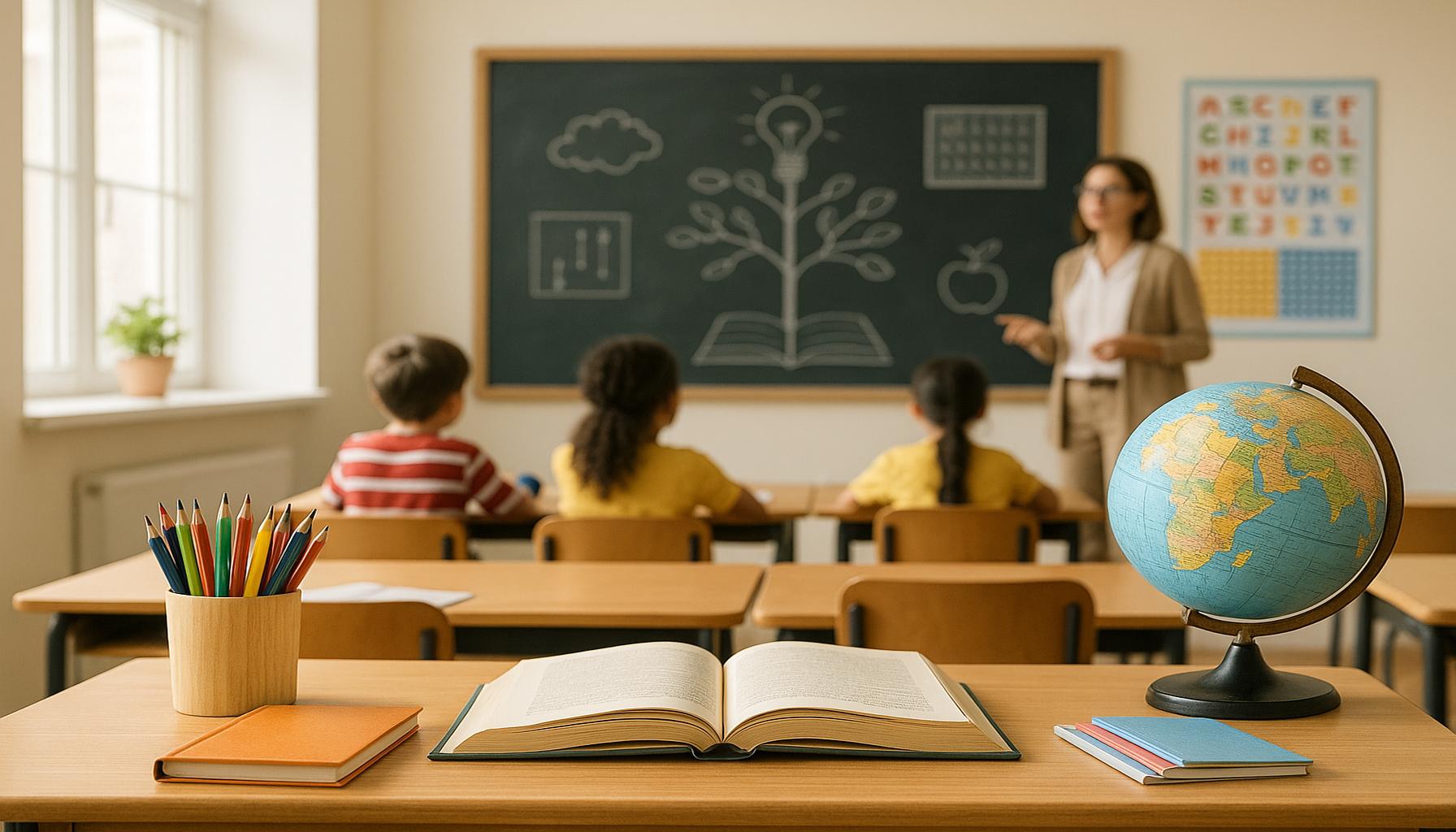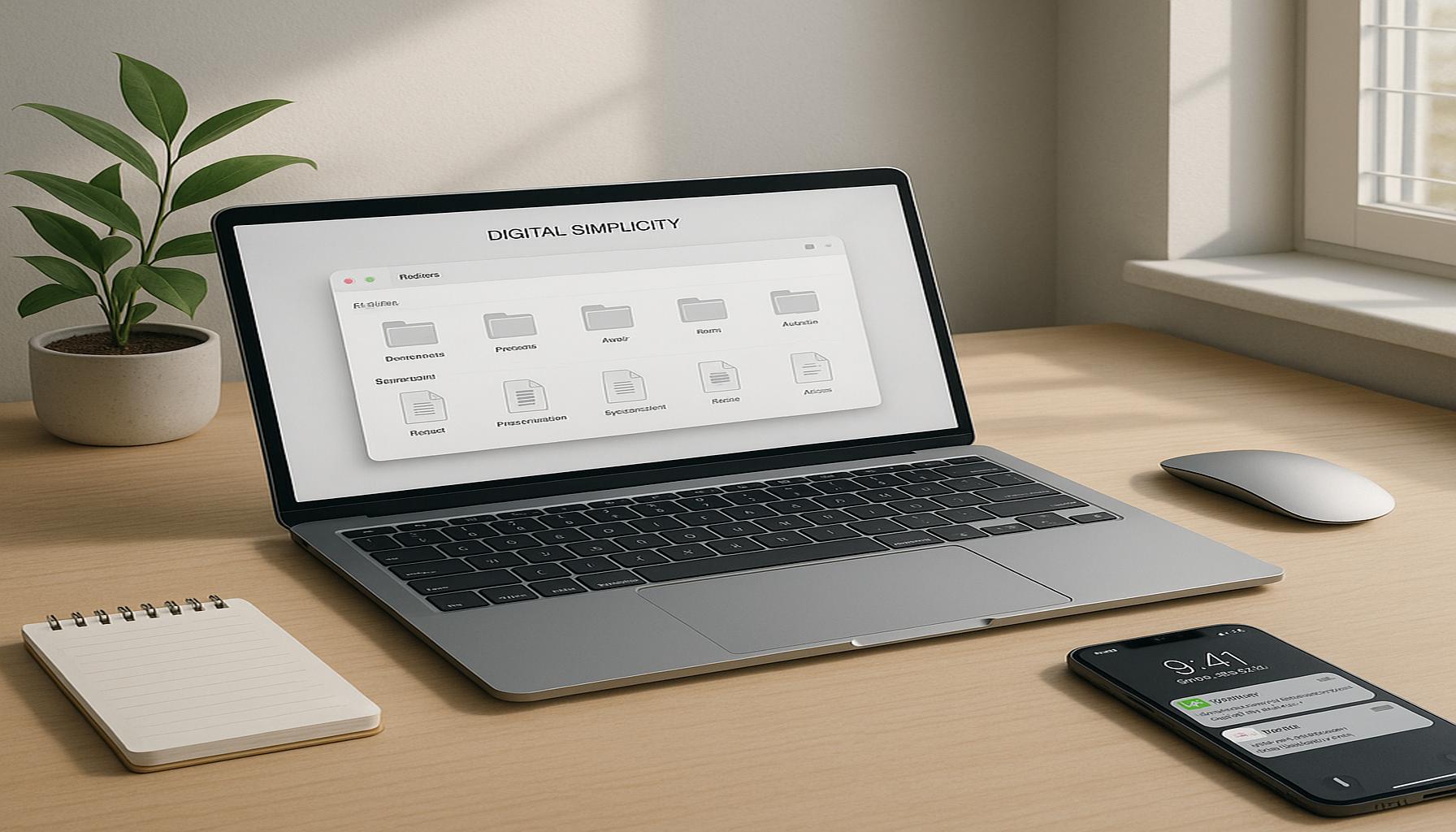Simplicity in Education: Methods for Learning and Teaching with Clarity

Diving into the Essence of Educational Simplicity
In today’s fast-paced, information-rich society, simplicity in education stands as a beacon guiding both teachers and students toward more effective learning. Traditional teaching methodologies frequently inundate students with complicated terminology and convoluted theories, often steering them away from the intrinsic joy of learning. If we shift toward a philosophy rooted in clarity and straightforwardness, the overall educational experience can be significantly enhanced.
One of the most profound advantages of simplifying education is the enhanced understanding it fosters. For instance, in subjects like mathematics or science, presenting complex equations or theories in a digestible format allows students to focus on core principles. Instead of drowning in formulas, students can first grasp the foundational concepts, such as basic arithmetic or the laws of physics, which serve as the building blocks for more advanced topics. This targeted focus not only shapes comprehension but also boosts confidence in learners.
Moreover, the impact on engagement cannot be overstated. When lessons are clear and relatable, students are more likely to engage actively with the material. For example, a history teacher might utilize storytelling techniques to recount a pivotal moment in American history, making it more vivid and exciting for students. Instead of viewing history as a list of dates and facts, learners can appreciate the human experiences that shaped our nation, prompting them to ask questions and participate in discussions.
The element of greater retention is also a significant outcome of simplified teaching methods. Research indicates that information presented simply is easier to remember, which often translates to better academic performance. Tools like visual aids can effectively reinforce this concept; charts, diagrams, and videos can encapsulate complex ideas quickly. For instance, a biology instructor may use infographics to summarize the human body systems, making the information not only visually appealing but also easier to recall during exams.
To actively implement these principles, educators can adopt various practical strategies. They might begin integrating visual aids into lesson plans to succinctly illustrate key points. Interactive discussions can also be encouraged, facilitating a space where students feel safe to express ideas and opinions, leading to a deeper understanding of the subject matter.
In summary, embracing simplicity in education is not just an innovative approach but a necessary evolution that can enrich classrooms across the United States. By focusing on clear, straightforward communication and interactive learning methods, educators can unlock the potential of their students, paving the way for a more impactful and fulfilling educational journey. This shift not only empowers students but also cultivates a passion for lifelong learning, enabling them to navigate the complexities of the world with clarity and confidence.
DIVE DEEPER: Click here to discover minimalist workspace strategies
Effective Strategies for Simplifying the Learning Experience
As educators and students navigate the complexities of the modern classroom, employing clearly defined strategies can significantly streamline the learning process. By incorporating simplicity into lesson plans, teachers can create an environment where understanding flourishes and curiosity thrives. Here, we delve into several practical methods that can enhance both teaching and learning outcomes.
One of the most pivotal strategies is to utilize scaffolding techniques. This approach involves breaking down lessons into manageable, bite-sized components, allowing students to build their knowledge step-by-step. For instance, when teaching a multi-step math problem, a teacher can first present the foundational concept of addition, followed by simple equations, before progressing to complex problems. This gradual advancement not only promotes understanding but also reduces anxiety, making students more receptive to new ideas.
Another effective method is the implementation of active learning. This strategy encourages student participation and interaction by merging practical application with theoretical knowledge. Schools across the United States are increasingly adopting collaborative projects and hands-on activities that involve real-world scenarios. For example, science classes might take field trips to local ecosystems, enabling students to observe concepts in action, thus making their learning experience both tangible and relatable.
In addition to scaffolding and active learning, multimedia resources play a vital role in simplifying education. Using videos, podcasts, and interactive software can cater to various learning styles while breaking down dense information into more digestible formats. Educational platforms such as Khan Academy and TED-Ed, which offer short, engaging videos on complex subjects, exemplify how multimedia can enhance comprehension and retention.
To illustrate how these strategies can intertwine, consider the following key elements of effective teaching:
- Clarity in Objectives: Begin each lesson by stating clear learning objectives. What should students be able to do by the end of the lesson? This transparency sets a roadmap for learning.
- Use of Simple Language: Avoid jargon and overly complicated terminology. Instead, communicate concepts in straightforward terms, ensuring that all students understand the material at hand.
- Frequent Feedback: Providing timely feedback during lessons helps students correct misconceptions and reinforces learning. This ongoing support can foster a growth mindset and improve overall performance.
- Curation of Resources: Select resources that enhance clarity rather than complicate it. Use materials that are visually appealing and easy to navigate, thereby inviting students to explore further.
Incorporating these teaching methods into the curriculum nurtures a simplified learning landscape that benefits both teachers and students. As we explore the myriad ways that education can evolve through simplicity, it becomes evident that prioritizing clarity allows for a more enriching and effective learning experience. By embracing these methodologies, educators can cultivate a classroom culture that champions understanding and inspires intellectual curiosity.
Simplicity in Educational Methods
The concept of simplicity in education emphasizes the importance of clear, straightforward approaches to teaching and learning. By stripping away the unnecessary complexities, educators can foster a more engaging and effective environment for students. This method allows learners to focus on core concepts without the distraction of convoluted information. The integration of simplicity into educational practices is essential in today’s fast-paced world, where attention spans are shorter, and the demand for effective learning is higher.
Effective Communication
Incorporating simplicity in education involves enhancing communication skills. When teachers express ideas in straightforward language, students are more likely to grasp concepts quickly. Using analogies, visual aids, and practical examples can break down intricate theories into digestible pieces. This approach not only improves understanding but also encourages students to ask questions, leading to deeper exploration of the subject matter.
Streamlined Curriculum Design
Simplifying curriculum design is another vital aspect. A well-structured curriculum that highlights essential learning objectives rather than an overload of information helps guide students through their educational journey. Focusing on the most relevant topics facilitates better retention and application of knowledge. Teachers can prioritize key skills and knowledge areas, making assessments more meaningful and aligned with real-world applications.
Engagement and Motivation
Students are naturally more engaged in a simplified learning environment. When complex processes are minimized, learners are motivated to participate actively. Incorporating hands-on activities, interactive lessons, and discussions cultivates a love for learning. Utilizing technology wisely can enhance this experience, allowing for seamless integration of multimedia resources that can clarify and reinforce simpler concepts.
| Category | Key Features |
|---|---|
| Clear Communication | Enhances understanding through straightforward language and relatable examples. |
| Streamlined Design | Focuses on essential skills and knowledge, facilitating better learning retention. |
| Increased Engagement | Creates an interactive environment that motivates students to learn actively. |
As we explore various methods for promoting clarity in teaching, it becomes clear that simplicity plays a crucial role in the effectiveness of educational practices. By leveraging these principles, educators can create a more harmonious learning experience that benefits not only students but also the broader educational community.
DIVE DEEPER: Click here to uncover more strategies
Fostering Clarity Through Structured Assessments
In the quest for simplicity in education, well-structured assessments play a crucial role in promoting learning clarity. Simplifying evaluation processes can significantly enhance student engagement and performance. Traditional assessments often create barriers; however, innovative approaches can not only assess knowledge but also amplify understanding. Educators can embrace formats such as formative assessments—quick checks for understanding conducted throughout the instructional process. This type of assessment allows teachers to gauge student comprehension regularly, offering immediate insights that inform teaching adjustments and enhance student support.
Another method worth exploring is the utilization of performance-based assessments. These assessments compel students to demonstrate their understanding through practical, real-world tasks. For instance, instead of responding solely to written tests, students might be tasked with creating a science project or delivering a presentation. Such tasks encourage deeper engagement, allowing students to contextualize their knowledge and skills within tangible frameworks. Performance-based assessments not only simplify the evaluation by focusing on practical applications but also build essential soft skills like communication and teamwork.
Streamlining Communication in the Educational Sphere
Simplicity also flourishes through effective communication between educators, students, and parents. Establishing straightforward pathways for feedback and queries can transform the educational experience. Regular updates via newsletters, classroom management apps, or shared online platforms can keep parents informed and engaged. Structured communication helps nurture a sense of community and collaboration, breaking down barriers that often complicate learning. Moreover, by setting aside time for dedicated one-on-one sessions, teachers can address individual student concerns in a focused manner, fostering personal connections.
Visual aids further enhance communication clarity. Using charts, graphs, illustrations, and other visual tools can effectively convey complex information in a manner that is easily comprehensible. For instance, educators can employ infographics to summarize key information or visualize data, making it simpler for students to grasp essential concepts quickly. Integrating visual aids into teaching not only reinforces written material but also caters to visual learners, ensuring that diverse learning needs are met.
Implementing Mindfulness Practices
Incorporating mindfulness practices within educational settings can yield substantial benefits in promoting clarity and focus. As classrooms grapple with distractions from various sources, introducing mindfulness exercises like brief meditation or breathing exercises can help students cultivate concentration and presence. Such practices encourage a serene learning environment, enabling students to absorb information more efficiently. Educators can dedicate just a few minutes at the start of class to engage students in mindfulness, helping to clear mental clutter and prepare them for focused learning.
Moreover, emphasizing a growth mindset can empower students to embrace challenges with clarity and resilience. When educators create a culture that celebrates progress over perfection, students feel more encouraged to tackle difficult tasks. They come to understand that failure is a part of the learning journey—a vital aspect of building their knowledge base. This mindset approach promotes self-evaluation while underscoring the objectives of their learning pursuits, thus simplifying the learning experience.
In addition to these practical strategies, fostering a community of practice among educators can yield innovative solutions for teaching and learning with clarity. By collaborating and sharing insights with colleagues, teachers can develop best practices that simplify lesson delivery and enhance overall effectiveness. Regular professional development workshops focused on simplicity in education can provide educators with new perspectives and skills, benefiting not only their teaching but also their students’ learning experiences.
DISCOVER MORE: Click here to learn how minimalism can transform your space
Conclusion: The Pathway to Enhanced Learning through Simplicity
In a world where education is often laden with complexity, the embrace of simplicity in education presents a transformative opportunity for both learners and educators. Through methods that prioritize clarity, such as structured assessments, effective communication, and mindfulness practices, we empower students to engage deeply with the material, fostering not just understanding but a genuine love for learning.
The integration of formative and performance-based assessments simplifies evaluation by focusing on the practical application of knowledge, enhancing critical thinking and collaboration among peers. Meanwhile, effective communication channels nurture a supportive community that encourages student participation and involvement, paving the way for holistic growth. Furthermore, incorporating mindfulness into the classroom environment fosters a sense of calm and focus, enabling students to clear mental distractions and hone their attention on learning objectives.
As we consider the future of education, it becomes clear that simplicity serves as a cornerstone for success. By promoting a growth mindset and fostering communities of practice among educators, we not only simplify the teaching process but also inspire students to view challenges as stepping stones on their learning journey. Now, more than ever, it is essential to challenge traditional norms and adopt a newfound clarity in educational practices. Each method discussed is a step towards building an educational landscape that truly caters to the diverse needs of learners, ensuring accessibility, engagement, and ultimately, achievement.
In the broader context of educational reform, the principles of simplicity can lead to profound changes in how knowledge is imparted and received. Thus, educators and policymakers alike must prioritize simplicity as a guiding principle, ensuring that the future of education is as clear and engaging as it should be.


